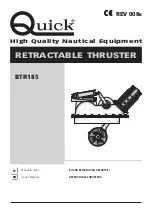Reviews:
No comments
Related manuals for V60N

6241
Brand: A-Trend Pages: 40

PIC18F57Q43 Curiosity Nano
Brand: Microchip Technology Pages: 34

BTR185
Brand: Quick Pages: 44

ZC706
Brand: Xilinx Pages: 23

ML505
Brand: Xilinx Pages: 60

ML505
Brand: Xilinx Pages: 41

Zynq UltraScale+ ZCU104
Brand: Xilinx Pages: 92

Zynq UltraScale+ ZCU104
Brand: Xilinx Pages: 4

Spartan-3A DSP FPGA Series
Brand: Xilinx Pages: 10

ML605
Brand: Xilinx Pages: 92

SY-7IWB
Brand: SOYO Pages: 95

PCM-8152 3rd Generation
Brand: Aaeon Pages: 6

conga-HPC/EVAL-Server
Brand: Congatec Pages: 54

993BSR4A
Brand: JETWAY Pages: 44

EMB-Q87B
Brand: Aaeon Pages: 44

PP-I7RS400 PURE PERFORMANCE II
Brand: Sapphire Audio Pages: 44

DC2461A
Brand: Linear Technology Pages: 7

DQ963FX - Desktop Board Motherboard
Brand: Intel Pages: 72






















